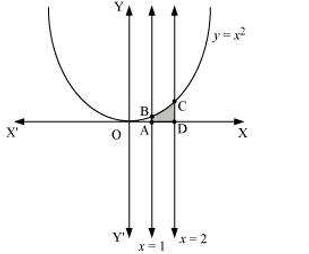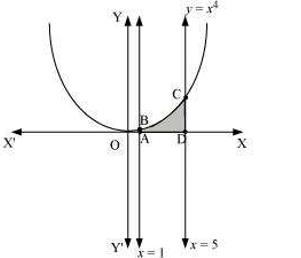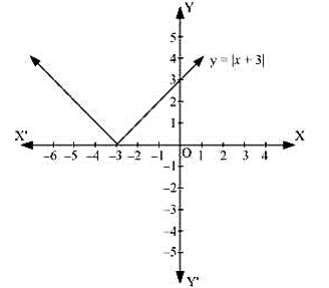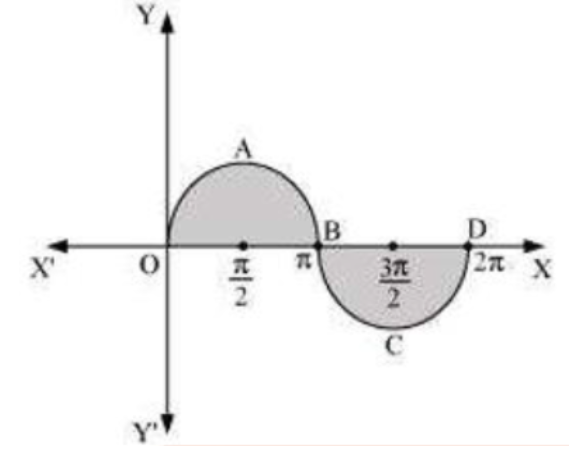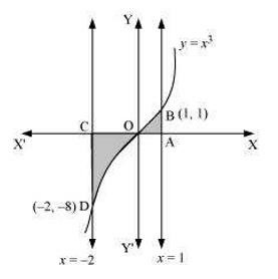NCERT Solutions for Class 12 Maths Chapter 8 Miscellaneous Exercise - Free PDF Download
FAQs on NCERT Solutions for Class 12 Maths Chapter 8 Application of Integrals Miscellaneous Exercise
1. What kind of problems are covered in the Application of Integrals Class 12 NCERT Solutions Miscellaneous?
The Miscellaneous Chapter 8 Class 12 deals with various applications of definite integrals, including:
Finding areas and volumes enclosed by curves (using definite integrals to calculate areas under curves, volumes of revolution, etc.)
Finding lengths of curves (applying definite integrals to calculate the arc length of a curve)
Finding moments and centres of mass (using definite integrals to calculate moments of inertia and centres of mass for various shapes)
Solving problems involving work done by a variable force (applying definite integrals to calculate the work done by a force whose magnitude varies)
2. How do the NCERT solutions approach these problems?
The NCERT solutions typically:
Briefly remind you of the relevant concepts from definite integrals and their applications.
Guide you through the process of setting up the definite integral expression for the given problem scenario. This might involve identifying the region of integration, defining the integration, and setting up the limits of integration.
Demonstrate how to evaluate the definite integral using appropriate techniques (numerical integration methods might be used in some cases).
3. Are there any tips for using the NCERT solutions effectively?
Here are some tips:
Grasp the fundamentals: Ensure you have a clear understanding of definite integrals, their geometric interpretation, and how they relate to areas, volumes, etc.
Practice with different applications: Solve problems involving area, volume, arc length, moments, and work done by a variable force to gain experience applying definite integrals in various contexts.
Focus on the setup: When referring to the NCERT solutions, pay close attention to how the definite integral expression is set up for the specific problem. Understanding this setup is important for solving similar problems independently.
4. Where can I find additional resources for practising the Application of Integrals Class 12 NCERT Solutions Miscellaneous?
The NCERT textbook itself might provide solutions to some problems within the miscellaneous exercise section.
Vedantu offers comprehensive solutions and explanations for these problems. You can find them through a web search using terms like "NCERT Solutions Class 12 Maths Chapter 8 Miscellaneous Exercise Applications of Integrals."
5. Application of integral sample questions?
While I cannot provide specific solutions due to copyright, here are 2 sample questions to illustrate the types of problems you might encounter:
Find the area of the region enclosed by the curve y = x^2 and the lines x = 1 and x = 2. (This question requires setting up a definite integral to represent the area and then evaluating it)
Find the volume of the solid generated by revolving the region enclosed by the curve y = sin x, the x-axis, and the lines x = 0 and x = π/2 about the x-axis. (This question involves using the disc method with a definite integral to calculate the volume)
6. Are NCERT Solutions sufficient for Class 12 Maths board exams?
NCERT Solutions covers the entire CBSE Class 12 Maths syllabus comprehensively. However, it's advisable to supplement them with additional practice from reference books and previous years' question papers for thorough preparation.
7. Are NCERT Solutions useful for competitive exams like JEE and NEET?
Yes, NCERT Solutions provides a strong foundation in mathematical concepts, which is beneficial for competitive exams like JEE Main, JEE Advanced, and NEET. They cover essential topics that are part of these exams' syllabi.
8. What are the benefits of practising the Miscellaneous Exercise for exams?
Practising the Miscellaneous Chapter 8 Class 12 enhances problem-solving skills, reinforces understanding of integral applications, and prepares students for exam questions that require application-based knowledge.
9. What topics are covered in the Class 12 Maths Chapter 8 Miscellaneous Exercise Solutions?
The Miscellaneous Exercise covers various applications of definite integrals, such as finding areas between curves, volumes of solids of revolution, and calculating lengths of curves.























